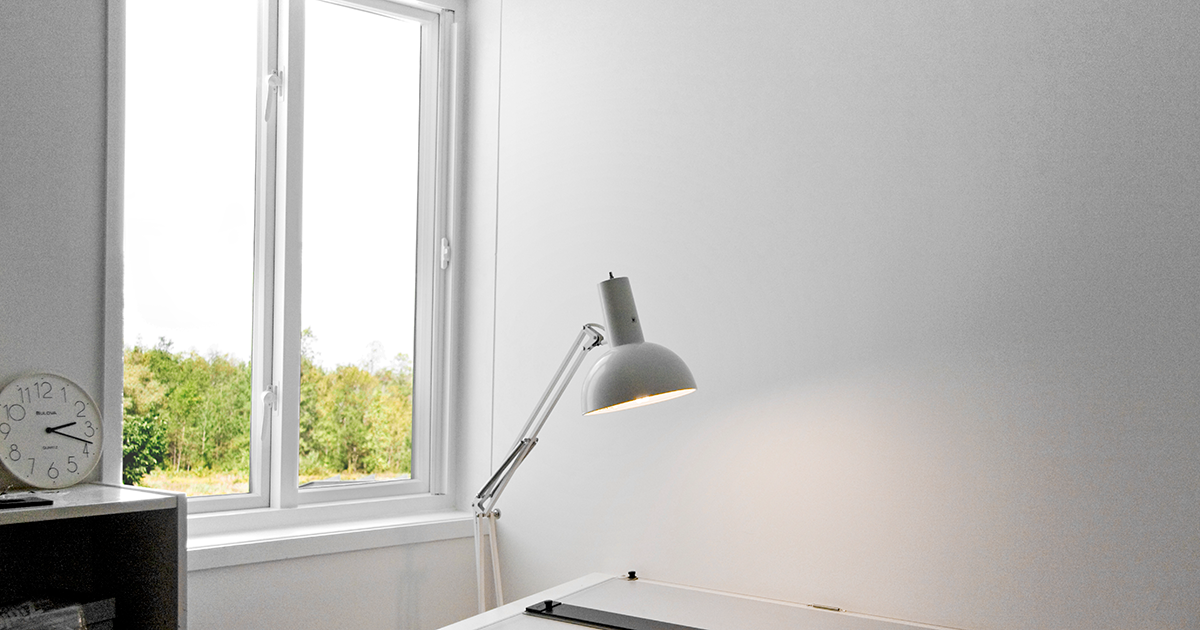For 40 years, Magic has provided Toronto and the GTA with some of the most advanced residential windows in the world. Our innovative replacement windows, patio doors and Window Walls can add style and performance to any home. Welcome to our blog, where we provide consumers with the information and inspiration they need to make informed decisions about energy-efficient replacement windows in Toronto.
Those looking for replacement windows in Toronto need to consider a number of factors when it comes time to purchase new units. Style, configuration and aesthetics all matter a great deal, but above all, homeowners must ensure that their windows will be reliably energy efficient. This is because windows, patio doors and skylights can be a major source of preventable energy loss around the home.
According to Natural Resources Canada, inefficient window units and doors can lead you to waste up to 35% of the energy produced in your home.1 This energy waste can lead to inflated utility bills regardless of the season. Instead of treating this unnecessary waste as an inevitability, homeowners should be looking into units that keep their homes secure, sealed and efficient. While proper efficiency can be a sizeable investment upfront, it’s one that will help you save time and money in the long run.
Read on to learn more about what to look for when purchasing energy-efficient replacement windows in Toronto.
Browse this Content:
- Part 1: Energy-efficient replacement windows will have the right certifications
- Part 2: The metrics & factors that determine a window’s energy efficiency
- Part 3: Understand what frame materials are energy efficient
- Part 4: We design & install certified energy-efficient replacement windows in Toronto
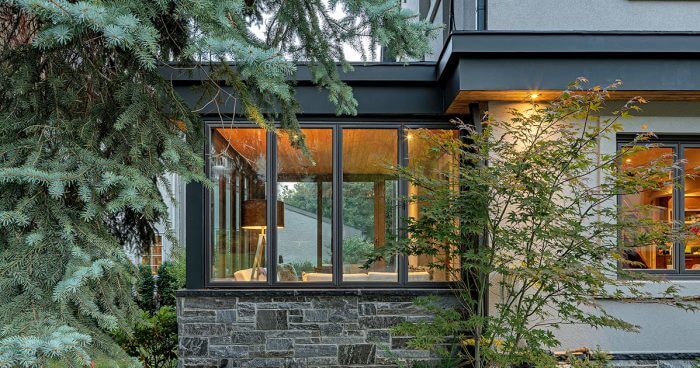
Part 1: Energy-efficient replacement windows will have the right certifications
Understanding what factors lead to energy-efficient replacement windows can help homeowners ask the right questions and make informed decisions about their homes. But what are these factors?
Third-party organizations like the National Fenestration Rating Council (NFRC) provide homeowners with reliable third-party information about energy-efficient windows. They have developed the necessary criteria to help homeowners understand when they are buying an independently-evaluated, energy-efficient product.
The National Fenestration Rating Council (NFRC)
The NFRC establishes objective window, door, and skylight energy performance ratings to help you compare products and make informed purchase decisions in the following three ways:2
- Communicating the energy performance of products using the NFRC label
- Helping you understand the different categories of energy performance
- Providing tips, tools, and educational resources about windows, doors and skylights.
The NFRC is an authoritative, industry-specific body that comprehensively compares energy-efficient windows. They provide standardized ratings in four key energy performance categories.
What are these categories? See a sample NFRC label below and read on for more information about each metric. Also, learn about the various window treatments used to improve these energy-saving metrics.
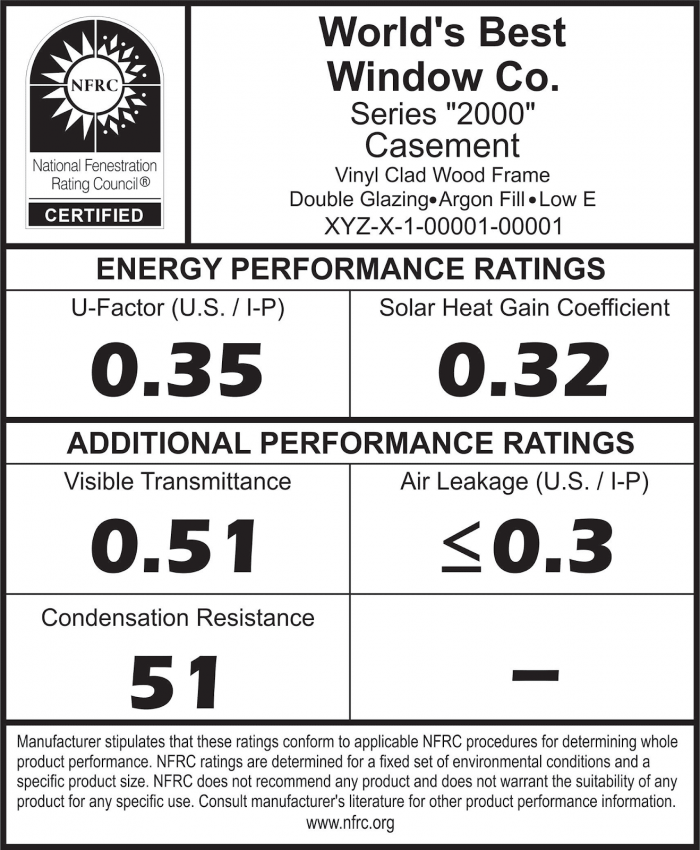
Part 2: The metrics & factors that determine a window’s energy efficiency
The following are the four essential metrics used by independent groups like the National Fenestration Rating Council to evaluate a window unit’s efficiency. You’ll also learn about window design features that help manufacturers improve these ratings.
Metric 1: Window U-Factor
U-factor determines the rate at which heat escapes through a window. The lower the U-factor number is, the better the window is at mitigating heat loss. Look for lower numbers on both the NFRC label.
How gas fills improve a window’s U-Factor rating:
Gas fills are an essential step in creating an insulated glass unit (an IGU). Manufacturers fill the space between the glass units with krypton, argon or xenon gas. These heavier, noble gases are preferable to filling the unit with air because they can better impede the transfer of heat through a window.
Most IGUs on the market are separated by ½ – ¾ of an inch. Due to our innovative approach to window hardware design, we are able to extend that space to a full inch. This means we can fill our IGUs with 25%-50% more gas. More gas leads to more effective insulation.
Metric 2: Solar Heat Gain Coefficient (SHGC)
This metric represents how much solar radiation a window lets into the home. In other words, it determines how well a window can resist unwanted heat gain. The lower the SHGC number, the better the window unit is at reflecting and repelling heat.
Low-Emissivity (Low-E) Coating regulates heat gain:
In order to improve SHGC, energy-efficient windows come equipped with Low-E (Low Emissivity) coating. This transparent, incredibly thin coating helps the window reflect unwanted solar heat, allowing homes to cool more efficiently in warmer temperatures. It also reflects the radiant heat emitted by objects inside the home (such as an HVAC unit) back into the home. This helps reduce heat loss during the colder months.
Low-E coating is effective because it can be tailored to deliver the right SHGC rating for specific climate regions. In warmer climates, for instance, the glass can be formulated with a heavy Low-E coating such as Guardian’s Sunguard 62/27 that will significantly reduce the amount of heat coming through the glass.
In Southern Ontario, where the weather changes drastically from hot to cold over the year, a balanced Low-E formula such as the ClimaGuard 70/36 is best. It’s designed to allow you to take advantage of the sun’s heat in the winter, while not having it be overwhelming in the summer months.
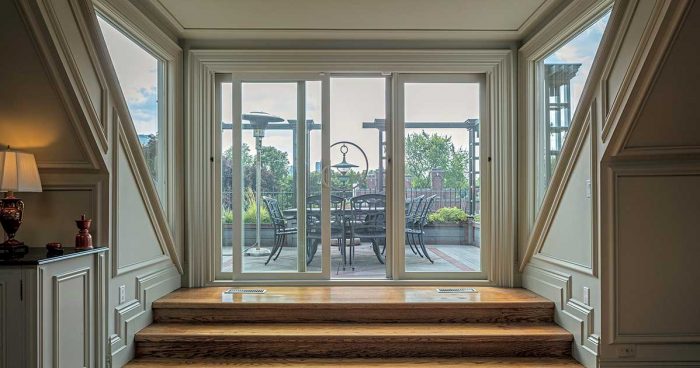
Metric 3: Air Leakage
Air leakage infiltration measures the amount of airflow into the building via the window and exfiltration is the flow of air out of the building. The lower the number, the better your windows will be at preventing unwanted airflow.
Metric 4: Visible Transmittance (VT)
This metric determines how well a window permits the flow of natural light into a home. The higher the VT, the better. By allowing more natural light, a window helps reduce the need for artificial light sources.
Triple-glazed windows can impede natural light transmittance:
If a window has two panes, it is double-glazed; three panes, triple-glazed. The main benefit of triple-glazed windows
is clear: when you add a third pane of Low-E-coated glass, both the U-Factor and Solar Heat Gain Coefficient of the window will undeniably improve.
But what about light? This extra pane of Low-E glass creates a more pronounced tint which will impede visible transmittance and result in less natural light. Seeing as how one of the primary reasons homeowners replace their windows is to increase the amount of natural light, this is something that can’t be overlooked.
Energy-Efficiency Metrics
The following factors are the most important in determining the energy efficiency of windows and doors.| NFRC Factor | What it Measures | NFRC Ideal Range | What to Look For |
|---|---|---|---|
| U-Factor | Rate of heat loss through a window. | 0.20 – 1.20 | Lower Numbers |
| Solar Heat Gain Coefficient (SHGC) | How much solar radiation (heat) a window lets into the home. | 0 - 1 | Varies With Climate |
| Visible Transmittance | How well a window permits the flow of natural light. | 0 - 1 | Higher Numbers |
| Air Leakage | How well a window prevents unwanted airflow. | 0 - 1 | Lower Numbers |
Glass formulation: find energy-efficient replacement windows that will work for your home
Based on the factors mentioned above, glass formulation is essential in the manufacturing of energy-efficient replacement windows. Most window manufacturers purchase their IGUs directly from suppliers. Magic is unique in the sense that we do not purchase our IGUs. From glass types and glazings to gas fills and coatings, we formulate our own glass packages and customize them to suit your specific preferences, climate and home’s construction.
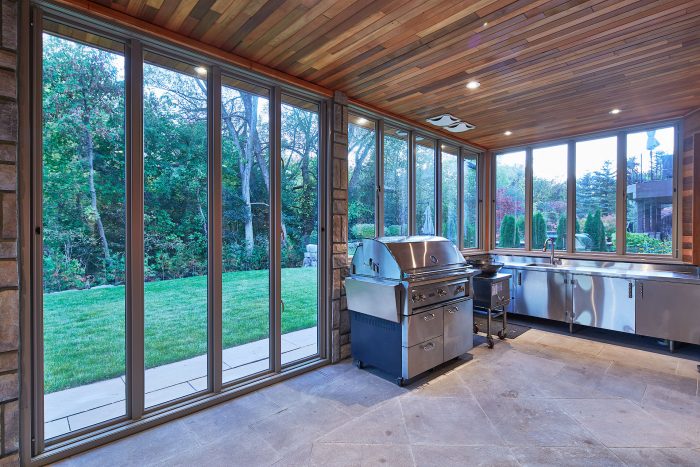
Part 3: Understand what frame materials are energy efficient
A window frame should be three things: strong, durable and efficient. Whereas some materials exceed in one or two categories, they can present liabilities in other areas. Learn more about different frame materials below and what each of them offers in terms of energy efficiency.
Wooden Window Frames
Wood frames are sturdy, constructed from a renewable resource and have a high aesthetic value. That said, they are also very expensive, require regular maintenance (painting, sanding, caulking) and are prone to rot and mildew. They can also warp in extreme weather conditions, leading to serious insulation and efficiency issues.
Aluminium Window Frames
While standalone aluminum frames are extremely durable and inexpensive, they transfer energy (heat and cold) very quickly, making them the least energy-efficient frame option. Even if aluminum frames contain multiple thermal breaks (barriers of low thermal conductivity placed within the frame), it is very unlikely that they will maintain thermal efficiency over the long run.
Vinyl Window Frames
In many ways, vinyl frames have the exact opposite problem that aluminum frames do. As a material, vinyl is cost-effective and energy-efficient and it’s the only material that allows manufacturers to weld the corners to create an impermeable seal. That said, traditional hollow vinyl window frames are prone to expansion and contraction in fluctuating weather conditions as well as physical damage.
Fibreglass Window Frames
Fibreglass is a strong, durable material that requires very little maintenance. That said, it’s still prone to expansion and contraction. The corners of fibreglass windows cannot be welded together. Instead, they must be mechanically pressed which can eventually lead to issues like water and air penetration.
A better option: Hybrid Fusion Frames
Magic began as a manufacturer of aluminum windows. As such, we understand and have an appreciation for the structural advantages of these frames. But as we now know, aluminum is not an energy-efficient material. So what to do?
Our solution was to combine the superior strength and durability of aluminum and galvanized steel, with the energy-efficiency and welded corners of vinyl frames. In doing so, we opted for more strength, more durability and more energy efficiency.
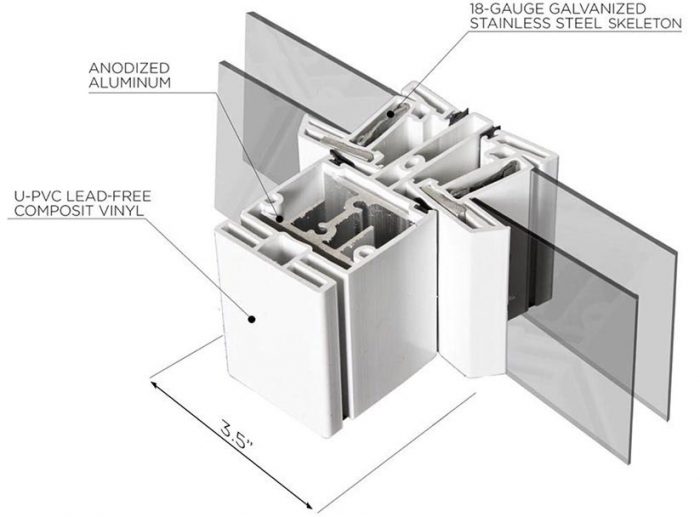
LEARN MORE ABOUT OUR HYBRID FUSION FRAMES HERE
Part 4: We design & install certified energy-efficient replacement windows in Toronto
If you’re in the market for energy-efficient replacement windows and doors, we offer premium designs to suit any home and any preference. We design our windows to be as energy-efficient as possible. All of our window and door units meet the rigorous energy-efficiency standards of the National Fenestration Rating Council.
For a full breakdown of the efficiency metrics of our product line, click here.
Learn More About Window Replacement in Toronto on Our Blog:
- Toronto Window Replacement: Everything You Need to Know
- Window Replacement in Toronto: 4 Reasons to Go With Us in 2020
- What is the Cost of Window Replacement in Toronto?
- Discover a Better Way to Replace Vinyl Windows in Toronto
- Premium Toronto Casement Windows: Learn More Here
- Toronto Patio Doors From Magic
- Toronto Star Readers Named Us The Best Window & Door Company: Here’s Why
- The Best Toronto Window Installation & Warranty
Sources:
1. Natural Resources Canada. “Windows, Doors & Skylights“
2. National Fenestration Rating Council. “About NFRC”

